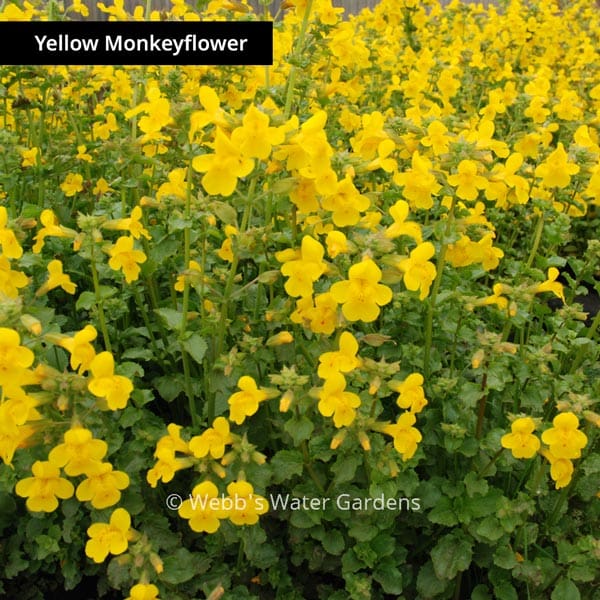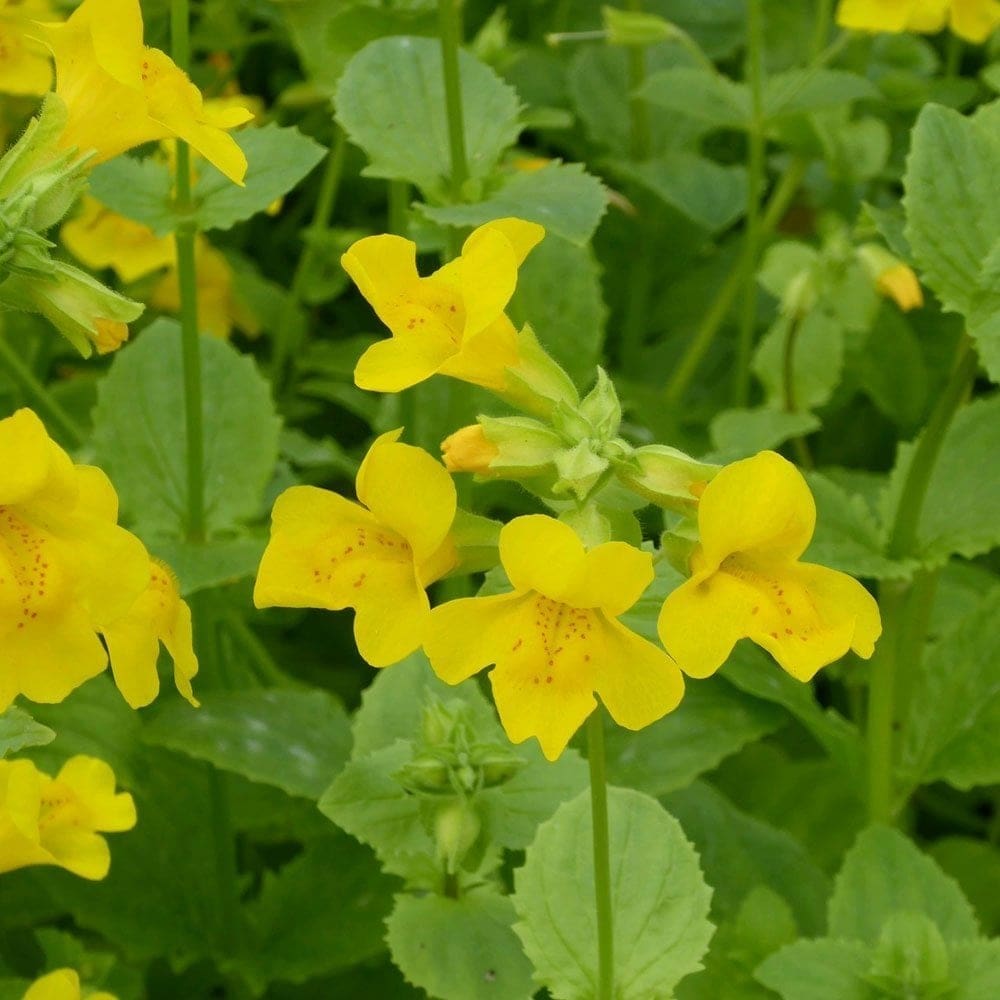As you venture into the realm of aquatic botany, you are likely to encounter the unique ecosystem that abounds in plant species exclusive to water bodies. Among these treasures lies Mimulus guttatus, an aquatic plant species that commands a distinguished presence. This article draws attention to the comprehensive study of Mimulus guttatus, unwrapping its extensive ecological importance, distribution, as well as its intriguing biological attributes. Embark on a thorough exploration of this extraordinary aquatic plant and strengthen your understanding of the aquatic ecosystem’s dynamic biodiversity.
Overview of Mimulus guttatus
Mimulus guttatus, also known as the seep monkeyflower or common yellow monkeyflower, is a fascinating species known for its vibrant blooms and intriguing adaptability. This plant belongs to the Phrymaceae family and is a low-growing herb that showcases yellow, almost gold, flowers.
Common names
You may hear Mimulus guttatus referred to by several common names, including common yellow monkeyflower, seep monkeyflower, among others. The term ‘monkeyflower’ is derived from the perceived similarity between its flowers and a monkey’s face, a whimsical comparison that adds an element of charm to this plant.
Brief history and origin
Mimulus guttatus is native to much of western North America, from Alaska to Baja California, and eastward through the northern United States and Canada. The Mimulus genus, which consisted of about 150 species, was first described in modern scientific terms by Carl Linnaeus in 1753, and Mimulus guttatus was among the species first described.
Botanical description
Mimulus guttatus grows from a base that includes both perennial and annual stems. The stem of the plant is erect or ascending and can range in height from 10 cm to 80 cm. Its ovate or lanceolate leaves, which are coarsely toothed, can be anywhere from 2 cm to 8 cm long. Its flowers are a brilliant yellow in color, with a lower lip featuring two to three lobes and an upper one with two lobes fused together.
Habitat of Mimulus guttatus
The Mimulus guttatus is an extraordinary species due to the wide range of habitats it can tolerate.
Natural habitat
This species can be found in wet, open, or shaded areas. It thrives in habitats such as ditches, meadows, coastal bluffs, stream banks, and even hot springs. Its admirable adaptability is one of its most significant features, allowing it to survive in damp environments that many other species cannot tolerate.
Geographical distribution
The geographical distribution of Mimulus guttatus is quite vast. It has been reported in a considerable number of regions across North America, such as western Canada and the United States. It can thrive in cooler northern environments and warmer southern regions, demonstrating its adaptive capabilities.
Environmental preferences
While Mimulus guttatus is a highly adaptable species, it still shows some environmental preferences. It often grows in wet or moist soils and is tolerant of both full sun and partial shade. Many species of this plant can also be found at high elevations and in cooler climates, reflecting its innate tolerance for a broad range of ecological conditions.

Physiological Characteristics
Mimulus guttatus possesses a unique set of physiological characteristics that allow survival in a variety of harsh conditions.
Size and shape
The size of Mimulus guttatus can vary significantly, primarily depending on its environmental conditions. It is a smaller plant, typically reaching only 10-80cm in height. Its overall shape is somewhat sprawling, often with various stems extending out from the base of the plant.
Leaf structure and features
The leaves of Mimulus guttatus have a distinctive appearance, being ovate or lanceolate in shape. They are commonly dark green in color and are usually coarsely toothed. The length of the leaves can vary significantly but typically measure anywhere from 2 cm to 8 cm long.
Flower structure and features
The flowers of Mimulus guttatus are particularly striking, usually a vivid yellow color, with a corolla that ranges from 20mm to 50mm in length. Each flower has a lower lip with two central lobes and an upper lip with two lobes fused together. The bright pigmentation and unique structure of these flowers contribute significantly to the mimulus flower’s overall appeal.
Seed structure and features
The seeds of Mimulus guttatus are minute, numerous, and light enough to be transported by wind, which aids in their dispersal. The ovules form seeds in a lower, three-chambered ovary after pollination.
Growth Cycle of Mimulus guttatus
Understanding the growth cycle of Mimulus guttatus provides a fascinating insight into the plant’s overall biology and how it interacts with its environment.
Germination period
Mimulus guttatus seeds require a moist environment to germinate. The specific timing of germination can however vary, depending on the temperature and light conditions. Under ideal conditions, germination may occur within 10-14 days.
Flowering season and conditions
Flowering of Mimulus guttatus often occurs in spring or early summer, although it may also flower at other times, depending on the climatic conditions. The vibrant yellow flowers typically last for several weeks.
Breeding method and reproduction cycle
Mimulus guttatus reproduces by both sexual and asexual means. The main mode of reproduction is through the production and dispersal of seeds, which occurs after the flowering stage. Asexual reproduction can occur through cuttings or division of the plant.
Lifespan
While some Mimulus guttatus plants can behave as annuals, the majority are perennial, often with a lifespan of several years. In warmer regions, the plants may be evergreen, while in colder climates, they may die back in the winter but re-sprout in the spring from the rootstock.

Ecological Role
As with any other plant species, Mimulus guttatus plays a significant role in its ecosystem.
Role in ecosystem
Mimulus guttatus contributes to the ecosystem in several ways. It helps stabilize stream banks and water bodies with its roots, reducing erosion. Its bright flowers attract various pollinators such as bees and birds, this supporting the maintenance and propagation of these important species.
Interactions with other species
The role of Mimulus guttatus in plant-pollinator interactions is well-recognized. It provides both food and habitat for a variety of insects and small animals. Its varieties have evolved in response to the pressures of its environment and pollinators, leading to diverse forms and functions.
Impact on biodiversity
The presence of Mimulus guttatus increases local biodiversity by providing food and habitat for various pollinators. Plus, its hardiness allows it to colonize and thrive in areas where other species might struggle, thus filling an important ecological niche.
Cultivation of Mimulus guttatus
While Mimulus guttatus is a hardy and adaptable species, there are specifics about its cultivation that should be understood for successful growth.
Ideal cultivation conditions
Mimulus guttatus thrives best in cool, moist environments. It prefers full sun but can also tolerate partial shade. The plant can grow well in a range of soil types, but a well-draining soil is ideal.
Growth requirements: light, temperature, water, and soil conditions
While it can tolerate partial shade, the bloom may be less abundant. It can withstand temperatures that are typically found across its native range. An ample supply of water is crucial for its growth, especially during the summer months, and it prefers moist but well-draining soil.
Maintenance and care
Mimulus guttatus is a relatively low-maintenance plant. Occasional pruning can help encourage bushier growth. It is also beneficial to remove dead flowers to prolong the blooming period. While generally hardy, this plant prefers consistent moisture and may show signs of stress during drought-like conditions.
Propagation methods and tips
Because it is a robust and adaptable species, propagation of Mimulus guttatus can be achieved through several methods, including by seed, division, or stem cuttings. When propagating by seed, it is generally best to sow in early spring to allow enough time for establishment before the hot summer months.

Use of Mimulus guttatus in Landscape Design
Mimulus guttatus can make a striking addition to a number of landscape designs due to its vibrant blooms and sprawling growth habit.
Applications in garden design
Because of its ability to grow in various conditions, Mimulus guttatus can fit into a variety of garden designs. It can serve as a ground cover in moist areas, can be grown in containers, or used in rock gardens and water features. Its vibrant flowers also make it an ideal choice for butterfly gardens.
Pairing with other plants
Mimulus guttatus pairs well with a wide range of plant species. It can be combined with other moisture-loving plants in a bog garden, used with other rock garden species in drier conditions, or planted with other perennials in a mixed border.
Managing growth in landscapes
While generally not aggressive, Mimulus guttatus can spread under ideal conditions. As such, it may need to be controlled or divided to prevent overgrowth, especially in densely planted areas.
Potential Threats and Concerns
As with any plant species, Mimulus guttatus faces threats and concerns that can impact its health and abundance.
Common diseases and pests
Mimulus guttatus is typically a hardy plant with few pests or diseases. However, it can occasionally be affected by fungal diseases, particularly in areas with poor air circulation or overly wet conditions. Aphids can also be a problem, usually attacking the young shoots and leaves.
Environmental threats and concerns
While Mimulus guttatus is an adaptable species, environmental changes such as habitat loss or alterations in water availability can threaten its habitat. In particular, the species is susceptible to variations in the water regime and pollution in the ecosystems it inhabits.
Potential invasive or noxious weed problems
In certain parts of the world, Mimulus guttatus has been reported as a potential invasive plant. Its ability to spread easily and establish itself in a variety of conditions may contribute to this issue. However, in its native range, it is usually not considered a problem.

Studies on Mimulus guttatus
Mimulus guttatus has garnered interest in scientific research over the years due to its robust nature and adaptability.
Genetic research
Mimulus guttatus has been extensively studied for its genetic diversity and adaptability. Research has explored the genomic basis of adaptation to high and low elevation habitats, as well as temperature and sun exposure preferences.
Ecological research
The ecological role of Mimulus guttatus, especially in its mutualistic relationships with pollinators, has been a central focus of ecological research. The plant’s interactions with its environment, including its response to different pollinators and environmental conditions, offer insights into the mechanisms of co-evolution.
Other significant research studies
Apart from genetic and ecological research, Mimulus guttatus has also been explored for various applications, including wastewater treatment and soil erosion control. These findings further point to the multifunctionality and ecological value of this species.
Conservation of Mimulus guttatus
While generally not threatened, efforts to conserve and propagate Mimulus guttatus are still crucial for this vibrant, adaptable species.
Conservation status
Most populations of Mimulus guttatus are currently stable, with the species often commonplace in its native range. However, alterations in hydrology due to urban development or agriculture, as well as pollution, may pose threats to local populations.
Conservation efforts
Efforts to conserve Mimulus guttatus primarily involve preserving and restoring its habitats. In some areas, translocation of threatened populations has also been undertaken. Localized efforts may include managing invasive species which could outcompete Mimulus guttatus or alter its habitat.
Sustainable practices for promoting its growth
Adopting sustainable practices in the cultivation and propagation of Mimulus guttatus is crucial to ensuring the plant’s continued survival. This includes minimizing habitat disturbance, using natural pest management methods, and minimizing water use in drought-prone areas.
Mimulus guttatus stands as an emblem of biodiversity and adaptability. Its vibrant blooms not only beautify the landscapes they inhabit but also serve as a critical resource for a variety of pollinators. Whether in the wild or a designed landscape, Mimulus guttatus plays a critical role in ecosystem dynamics. Understanding, conserving, and correctly cultivating this species allows us to appreciate and protect the vital ecological functions it performs.
